iPhone XS, XS Max and iPhone XR: Apple's new phones arrive
Apple has launched three new iPhones. Here's everything you need to know about the new iPhone XS camera and more
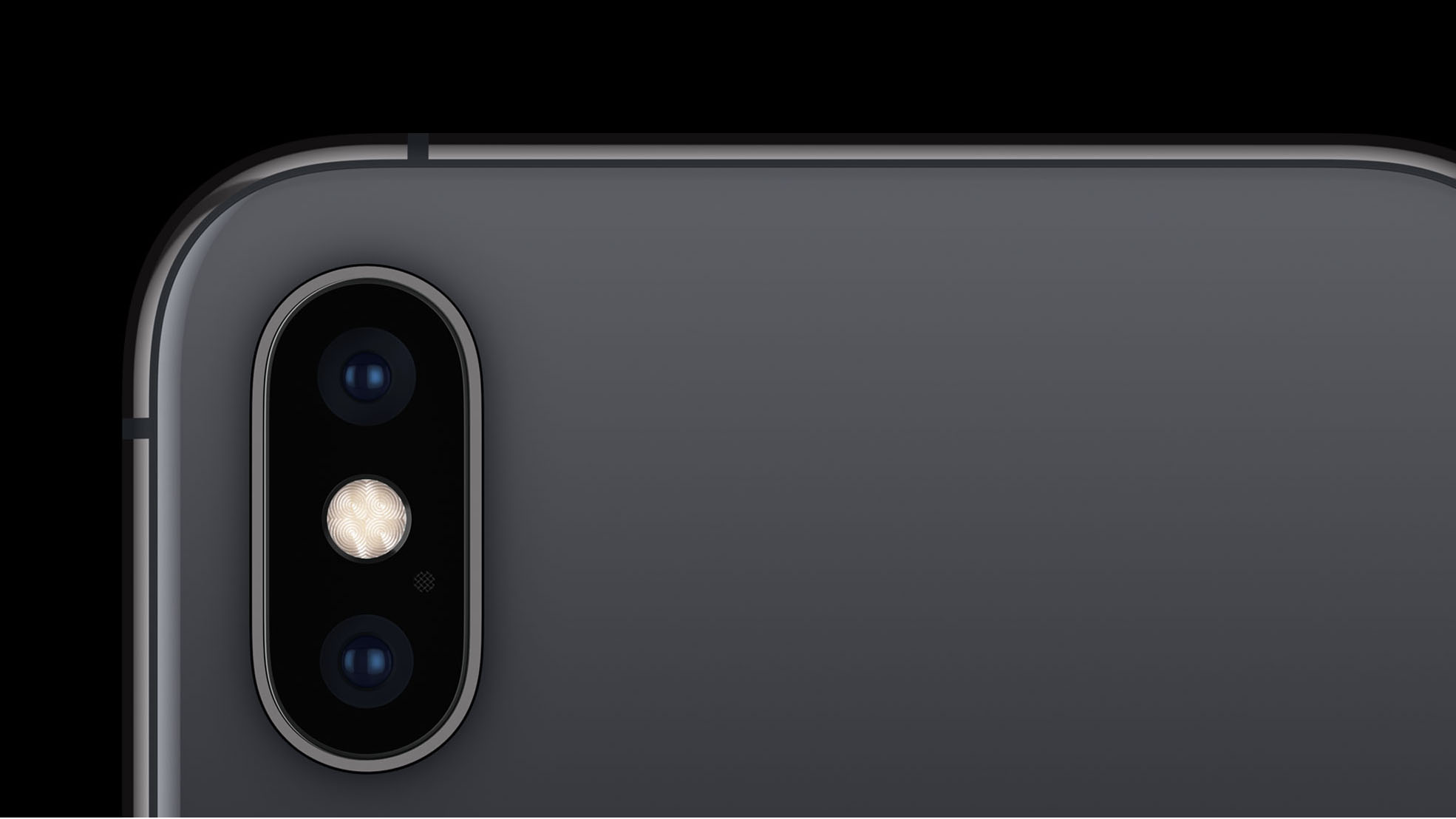
Apple announced three new iPhones at its annual iPhone gathering in California: the iPhone XS, iPhone XS Max and iPhone XR.
There were enough iPhone 11 rumours in the run-up the launch – especially regarding the camera capabilities of the new iPhones – to make us very excited indeed.
In this article we’ve gathered together everything we know about the iPhone XS, as well as what we, as photographers, had hoped to see in Apple’s upcoming smartphone.
UPDATE: We have spent some time with the iPhone XS and you can read about our finding in our in-depth iPhone XS camera review. In it we look at a number of the new features, including Smart HDR functionality, Depth Control and Advanced Picture mode.
iPhone XS: release date
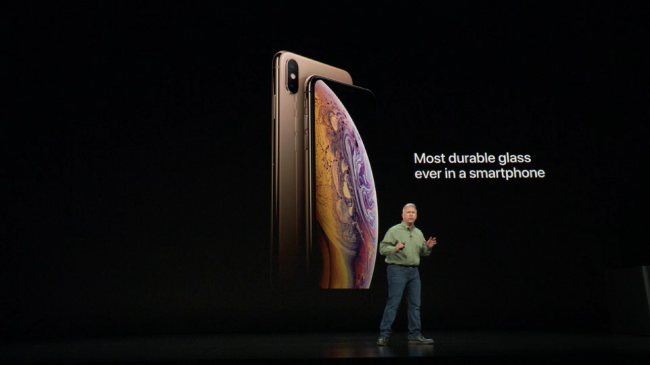
The iPhone XS and iPhone XS Max is available for pre-order now, and in stores from Friday 21 September.
You'll be able to pre-order the iPhone XR from Friday 19 October, with it arriving in stores from Friday 26 October.
iPhone XS and XS Max: price
The iPhone XS will cost US$999 (£999/AU$1,629) for the 64GB model; $1,149 (£1,149, AU$1,879) for the 256GB model; and $1,349 (£1,349, AU$2,199) for the 512GB model.
Get the Digital Camera World Newsletter
The best camera deals, reviews, product advice, and unmissable photography news, direct to your inbox!
The iPhone XS Max will cost US$1,099 for the 64GB model, $1,249 for the 256GB model, and US$1,449 for the 512GB model.
iPhone XS: design
As predicted, the design of the iPhone XS offers an incremental upgrade from last year’s iPhone X. It has a stainless steel frame, with a new gold finish on the glass at the rear. The glass is also tougher than before, thanks to a new formulation of glass on the front and back.
Display-wise, the iPhone XS sports a 5.8-inch OLED Super Retina display with a 2436 x 1125 resolution (giving it a bigger display than the iPhone 8 Plus, but in a smaller frame) and HDR support.
There’s a choice of three colours: gold, silver and space gray. And it’s protected from dust and liquid to IP68 – which means it’s protected against the likes of beer, wine, salt water and chlorine water.
It's also water resistant to a depth of 2m for up to 30 minutes and will apparently wirelessly charge quicker than its predecessors and have a longer lasting battery.
iPhone XS: camera
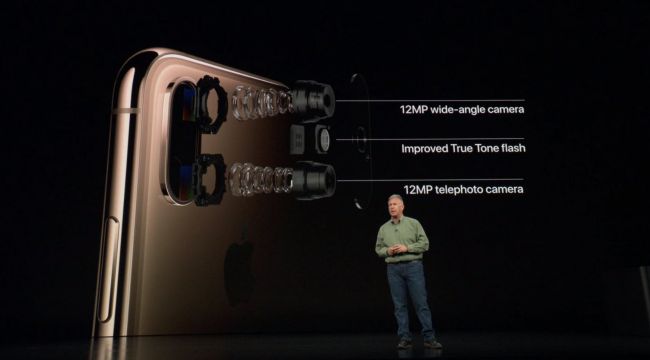
For photographers, the new iPhone XS offers two rear cameras. A new dual camera system sees a 12MP wide-angle lens (with OIS and f/1.8 aperture) sitting alongside a 12MP telephoto (with OIS and a f/2.4 aperture), plus an improved Quad-LED True Tone flash with Slow Sync.
The 7MP front camera (with f/2.2 aperture) is twice as fast as that on the iPhone X – and there’s a new portrait-editing feature in the app, too.
The Depth Control function lets you adjust the depth of field, to change the level of background blur after taking a shot. It's new to iPhone, but you’ll likely have seen this feature in a few Android phones already.
Portrait mode now offers advanced bokeh effects, and Portrait Lighting boasts five effects which you can swipe between once you've taken your shot. These are Natural, Studio, Contour, Stage and Stage Mono.
Finally, a Smart HDR feature promises to bring more shadow and highlight detail to your images thanks to the iPhone XS's faster sensors and advanced algorithms.
iPhone XS: video capabilities
All three models of the new iPhone will let you shoot 4K video up to 60 fps with the 12MP rear camera, while the 7MP front camera has all-new video stabilization and allows shooting of 1080p HD video up to 60fps.
Slo-mo video support will be for 1080p at 120 fps or 240 fps on all three models, as well as time-lapse video with stabilization.
See Apple's iPhone XS photography videos
iPhone XS: power
Under the hood, Apple's brand new A12 Bionic chip drives the new iPhone XS. Apple says the CPU is 40 per cent more power efficient, and 50 per cent more powerful than the A11 Bionic chip.
Meanwhile, a new Neural Engine intelligently works out what tasks to run on which cores, to give the best performance and battery performance.
iPhone XS Max
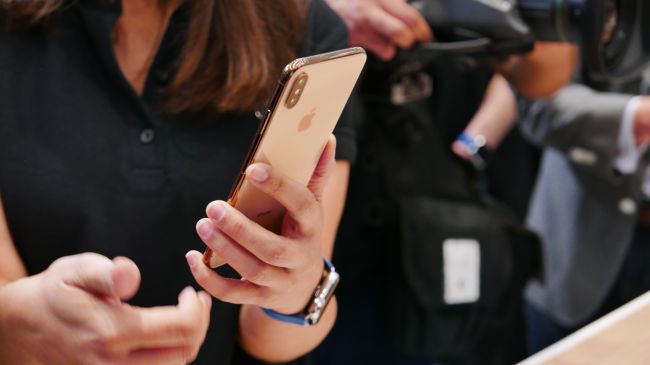
The iPhone XS Max is identical to the XS, apart from the dimensions. Both have the same Super Retina HD Display, but the XS Max handset is a generous 6.5", while the XS comes in at 5.8".
Obviously, the price is the other big difference, with the XS Max is the price, where it's coming in at $100 more than the XS for each of the models.
The iPhone XS Max will cost US$1,099 for the 64GB model, $1,249 for the 256GB model, and US$1,449 for the 512GB model.
iPhone XR
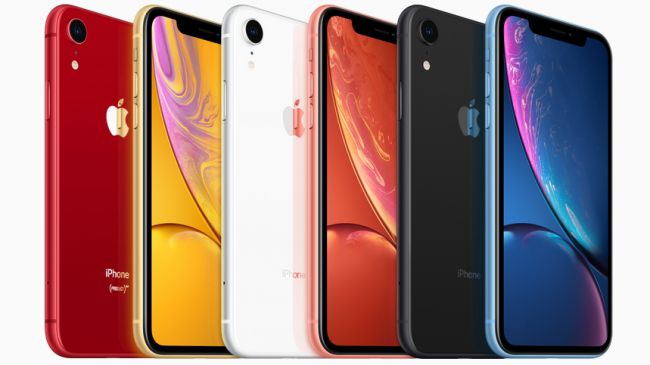
The budget model of the three iPhones that Apple announced, the XR may look like the XS at first glance, but there are many differences that may make it a good cheaper alternative for consumers.
Design-wise, the XR has adopted the glass back and metal frame look, albeit using aluminium rather than the XS's stainless-steel finish. The XR is also bezel-free like its more expensive family, but is less water resistance than the XS, being able to withstand 1 metre for 30 minutes versus the XS's 2 metre water resistance.
The obvious visible differences lie in the XR's larger and heavier dimensions and weight. The XR actually offers a bigger screen than the XS, but at the expense of quality and resolution, since the 6.1" display is Liquid Retina HD rather than the XS's superior Super Retina HD display.
There are also more colour choices on offer for the iPhone XR, which comes in red, yellow, white, coral, black and blue, as opposed to the iPhone XS's three choices: space gray, silver and gold.
iPhone XR camera
The iPhone XR's camera is another key area where it falls down in comparison to its more expensive XS and XS Max models.
The XR does feature the TrueDepth front-facing camera, and all the Portrait mode effects available on the XS, but while the XS and XS Max both boast a 12MP dual-lens rear camera (with both telephoto and wide-angle lenses), the XR features just one 12MP single-lens camera.
As a result, it lacks optical zoom, making it the less attractive model for enthusiast photographers.
iPhone XR price and release date
The iPhone XR will be available to pre-order on October 19 and will arrive in stores on October 26, with a starting price of $749 / £749 / AU$1,229.
Like the XS and XS Max, it will also be available in 64Gb, 128Gb and 256Gb models.
Anything else you should know?
So far, there are a number of carriers signed up to support the new iPhone's eSIM technology including AT&T, EE, Vodafone, T-Mobile, Verizon and others.
For now, we'll leave you with iPhone X price info, how the launch went down and what we'd hoped to see in the new iPhone XS/iPhone 11...
iPhone X: new price
We'd expect the price of the superseded iPhone X to drop now that the iPhone XS has been announced – our price-tracking tool has the most up-to-date prices, so keep an eye on the deals below...
Apple iPhone launch event
This was the first time that Apple has livestreamed its iPhone launch event in this way, and in the run up to the launch they tweeted reminders and updates.
Join us 12 September at 6:00 pm to watch the #AppleEvent live on Twitter. Tap ❤️ below and we’ll send you updates on event day. pic.twitter.com/ufxuu3kt9HSeptember 10, 2018
So has the new iPhone XS delivered everything we hoped for? In the months leading to last night's events, we anticipated a number of new features in Apple's latest iPhone – some more ambitious than others. Here's what we hoped to see in the new iPhone 11...
iPhone 11: rumours
Improved camera
The iPhone X came with a great camera, but as photographers we’re always after improved snappers in our smartphones. We’d like the iPhone 11 to come with an upgraded camera that tackles some of the issues we had with taking photographs with the iPhone X.
So, we’d like to see much improved low-light performance when taking photos indoors, as well as more vibrant HDR photos. An updated camera app that let us tweak the cameras settings even more would also be appreciated.
No camera bump
Gosh, we want it all don’t we? Not only would we love to see an upgraded camera on the iPhone 11, but we also want the rear camera to lose the bump where its lens extends out of the iPhone’s body.
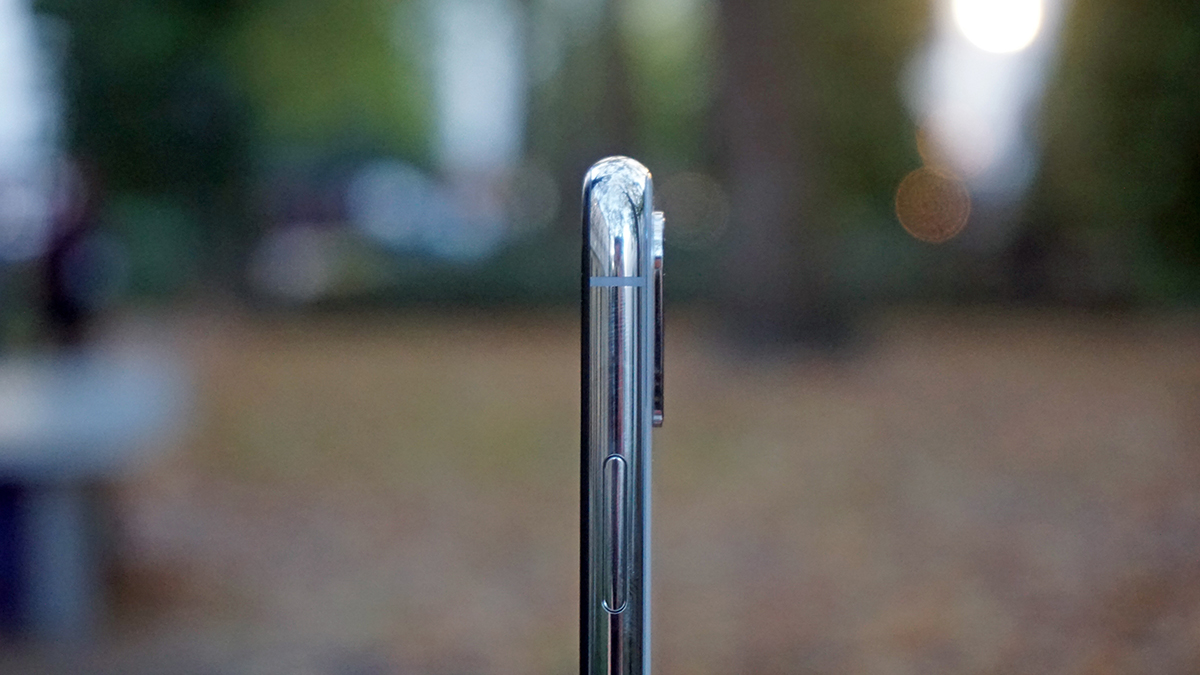
This protrusion looks a little ugly, and it also means the camera is at more risk of damage than if it was flush against the back of the handset (as the camera bump is the first thing to hit a surface when you put it down).
Realistically, the only way Apple could do this is by making the body of the iPhone 11 thicker. We’d argue that’s a price worth paying.
Lower price tag
Speaking of price, we’d love to see a cheaper iPhone 11. We’ll never get a budget version, but something that doesn’t break the bank quite so much would be brilliant. Being a photographer is an expensive life at the best of times, so we’d love to see a more affordable iPhone XI.
Read more: How to take better photos with your smartphone
- These are the best camera phones out right now.
Matt is TechRadar's Managing editor of core tech. Having written for a number of magazines and websites, there's no aspect of technology that Matt isn't passionate about, especially laptops and PC gaming.

